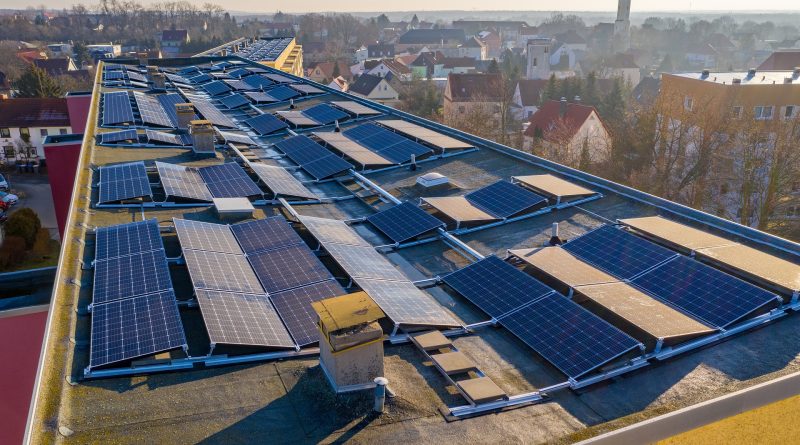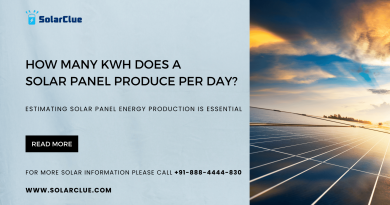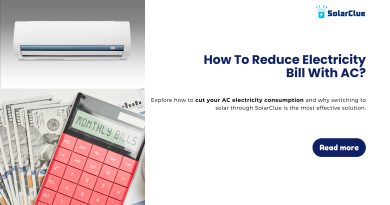Rooftop On-Grid Solar System: Harnessing Solar Power Efficiently
Solar power systems are becoming increasingly popular as a clean and sustainable energy source. Among the various types of solar power systems, rooftop on-grid systems are gaining significant attention. These systems, installed on the rooftops of buildings, have the potential to revolutionize the way we generate and consume electricity. In this blog, we will delve into the concept of rooftop on-grid solar power systems, explaining what they are, how they work, and discussing their advantages and limitations.
Table of Contents
What is a Rooftop On-Grid Solar Power System?
A rooftop on-grid solar power system, also known as a grid-tied solar system, is a solar photovoltaic (PV) system that generates electricity from sunlight. Unlike off-grid systems that require batteries to store excess energy, on-grid systems are directly connected to the utility grid. These systems utilize solar panels mounted on the rooftop of a building to convert sunlight into electricity. The electricity generated is then fed into the grid, making it available for consumption by the building occupants or other consumers.
How Does a Rooftop On-Grid Solar Power System Work?
Rooftop on-grid solar power systems consist mainly of three components – solar panels, an inverter, and a grid connection. Solar panels, typically made of silicon-based photovoltaic cells, capture sunlight and convert it into electricity through a process known as the photovoltaic effect. The inverter then converts this direct current (DC) electricity into alternating current (AC) electricity, which is suitable for use in households and businesses. The AC electricity generated is then sent to the main electrical service panel, where it is distributed to various loads within the building.
The grid connection is a crucial element of on-grid solar power systems. When the rooftop solar panels produce more electricity than the building’s immediate demand, the excess electricity is sent back to the grid through a bidirectional meter. In this way, the surplus energy is credited to the building owner, effectively reducing their electricity bills. Conversely, when the solar panels are not producing enough electricity to meet the building’s demand, electricity is drawn from the grid to compensate for the shortfall, ensuring a seamless power supply.
The Advantages of Rooftop On-Grid Solar Power Systems
Rooftop on-grid solar power systems offer numerous benefits, making them an attractive option for both residential and commercial properties. One significant advantage is the potential for substantial cost savings. By generating their own electricity, building owners can significantly reduce their reliance on the utility company, resulting in lower monthly electricity bills. Additionally, in some regions, excess electricity fed into the grid can be sold back to the utility company, further offsetting the initial installation costs.
Another advantage of on-grid systems is their environmental friendliness. By harnessing the power of the sun, these systems produce clean energy, reducing greenhouse gas emissions and dependence on fossil fuels. This not only contributes to a healthier planet but also aligns with the growing global commitment to combat climate change. Furthermore, rooftop solar panels have the added benefit of utilizing unused space on buildings, making them a smart and efficient way to generate electricity without additional land requirements.
The Limitations of Rooftop On-Grid Solar Power Systems
Despite the numerous advantages, rooftop on-grid solar power systems are not without limitations. One key limitation is their dependency on sunlight. As solar panels rely on sunlight to generate electricity, their energy generation may fluctuate depending on weather conditions, time of day, and seasonality. This variability means that on-grid systems may not always meet the building’s demand. However, the grid connection ensures a reliable power supply, mitigating this limitation.
Another limitation is the initial cost of installation. While the long-term financial benefits of on-grid solar power systems are substantial, the upfront investment required can be a barrier for some. The cost includes purchasing and installing solar panels, inverters, and other necessary equipment, as well as obtaining permits and hiring professional installers. However, as technology advances and economies of scale are realized, the cost of solar equipment continues to decrease, making these systems increasingly accessible.
Conclusion
Discover the future of electricity generation with SolarClue® through innovative rooftop on-grid solar power systems. These sustainable solutions capture sunlight and convert it into usable energy, offering a range of benefits such as cost savings, environmental friendliness, and efficient use of building space. While there may be limitations, including weather dependency and initial costs, the advantages provided by SolarClue®’s rooftop on-grid solar power systems far outweigh these drawbacks.
As the demand for clean energy continues to soar, SolarClue® is at the forefront, shaping the future of electricity generation and consumption. By integrating these cutting-edge systems, not only do you contribute to a greener environment, but you also align with the global shift towards sustainable energy solutions. Embrace SolarClue® and join the movement towards a more sustainable and efficient energy future.
Frequently Asked Questions
A rooftop on-grid solar system is a solar power generation setup installed on the roof of a building that is connected to the local electrical grid, allowing for the efficient utilization of solar energy.
These systems capture sunlight through solar panels, convert it into electricity, and feed the generated power directly into the grid. The building can then use this solar-generated electricity or draw additional power from the grid when needed.
Advantages include cost savings on electricity bills, reduced environmental impact, efficient use of available roof space, and potential financial incentives or rebates.
While these systems are influenced by weather conditions, they can still generate power on cloudy days. However, their efficiency may vary based on the amount of sunlight available.
Typically, rooftop on-grid solar systems have a lifespan of 25 to 30 years, making them a long-term and sustainable investment.
On-grid systems generally have lower maintenance needs compared to off-grid systems. Regular cleaning of solar panels and occasional check-ups are usually sufficient.
For safety reasons, on-grid systems are designed to shut down during power outages to prevent backfeeding into the grid. Special inverters may be required to enable power generation during outages.
Yes, many regions allow homeowners or businesses to sell excess electricity generated by their rooftop on-grid solar systems back to the grid, often through a process known as net metering.
In many countries, there are government programs offering incentives, tax credits, or rebates to encourage the adoption of rooftop on-grid solar systems.
The size of the system depends on factors such as energy consumption, available roof space, and local sunlight conditions. Consulting with a solar professional can help determine the optimal size for your specific needs.




